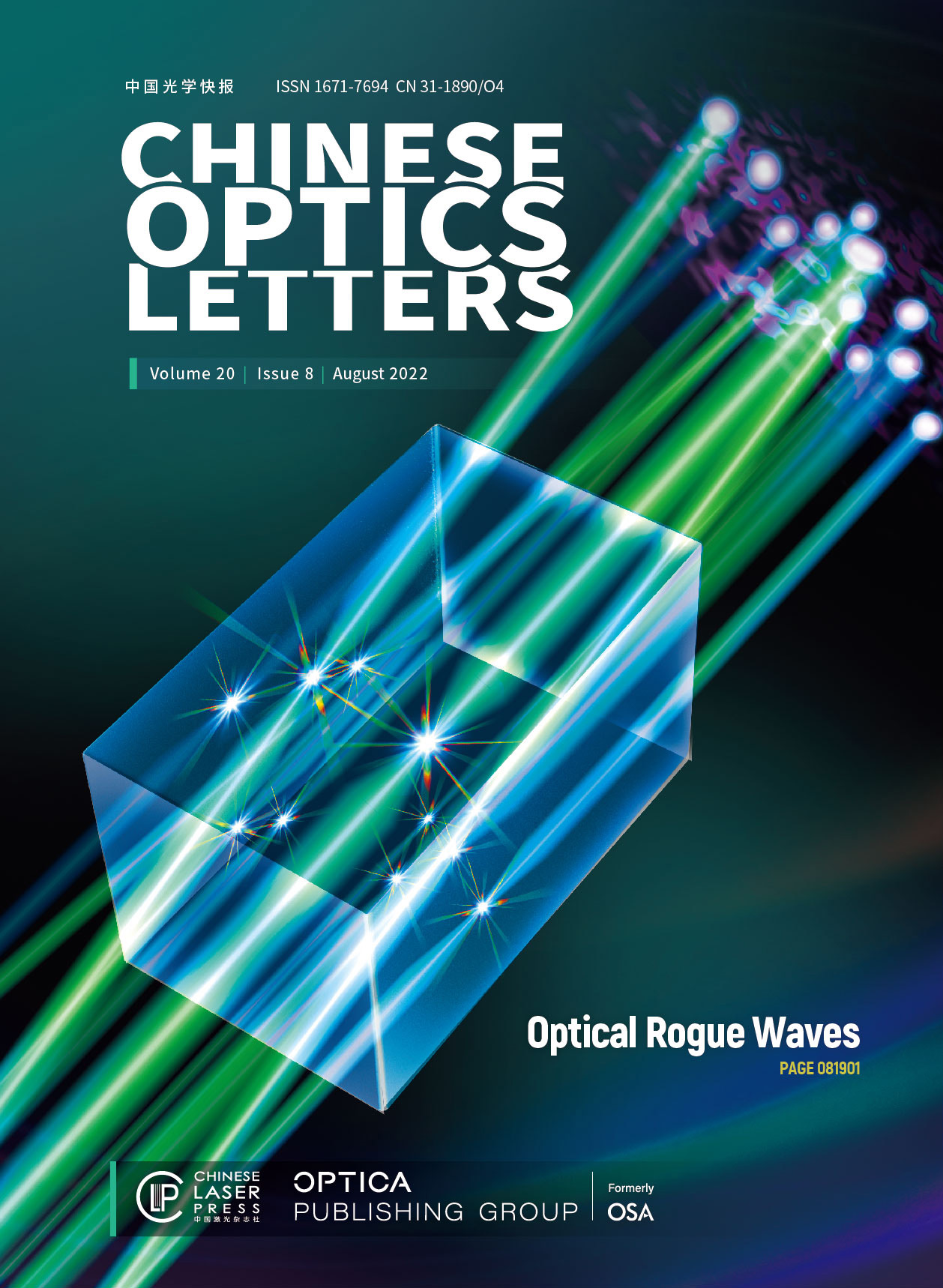Journals >Chinese Optics Letters
- Publication Date: May. 26, 2022
- Vol. 20, Issue 8, 081701 (2022)
- Publication Date: May. 19, 2022
- Vol. 20, Issue 8, 080601 (2022)
- Publication Date: May. 26, 2022
- Vol. 20, Issue 8, 081101 (2022)
- Publication Date: May. 26, 2022
- Vol. 20, Issue 8, 081201 (2022)
- Publication Date: May. 26, 2022
- Vol. 20, Issue 8, 081202 (2022)
- Publication Date: May. 28, 2022
- Vol. 20, Issue 8, 081203 (2022)
- Publication Date: May. 26, 2022
- Vol. 20, Issue 8, 081301 (2022)
- Publication Date: May. 25, 2022
- Vol. 20, Issue 8, 081401 (2022)
- Publication Date: May. 26, 2022
- Vol. 20, Issue 8, 081402 (2022)
- Publication Date: May. 26, 2022
- Vol. 20, Issue 8, 081403 (2022)
- Publication Date: May. 28, 2022
- Vol. 20, Issue 8, 083901 (2022)
- Publication Date: May. 31, 2022
- Vol. 20, Issue 8, 081901 (2022)
About the Cover
The optical rogue waves that can be stably excited in nonlinear medium is the best way to study the rogue wave phenomenon. In particular, it was found that in SBN crystals, a stable and observable evolutionary process of spatial rogue waves can be excited. The variables can be easily controlled and the probability of rogue waves excitation can be statistically studied. Experiments calculated the effect of saturated nonlinearity on the excitation probability of spatial rogue waves, and found that under the nonlinear effect, the beam went through the evolution process of "Gaussian-corrosion-like region-splitting", and when the beam splitting is critical, the rogue waves excitation probability is maximized. Such a simple rogue wave excitation method and nonlinear evolution law should be applicable to other nonlinear systems.












